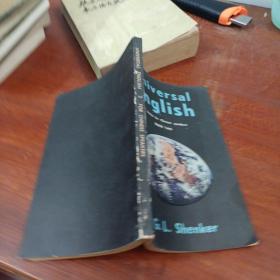
现货Universal Coding and Order Identification by Model Selection Methods (2018)[9783319962610]
¥ 1021 九五品
仅1件
作者Gassiat, ?lisabeth ; Ben-Hamou, Anna
出版社Springer
ISBN9783319962610
出版时间2018-08
装帧精装
纸张其他
页数146页
正文语种英语
上书时间2023-08-14
- 最新上架
商品详情
- 品相描述:九五品
- 商品描述
- The purpose of these notes is to highlight the far-reaching connections between Information Theory and Statistics. Universal coding and adaptive compression are indeed closely related to statistical inference concerning processes and using maximum likelihood or Bayesian methods. The book is divided into four chapters, the first of which introduces readers to lossless coding, provides an intrinsic lower bound on the codeword length in terms of Shannon''s entropy, and presents some coding methods that can achieve this lower bound, provided the source distribution is known. In turn, Chapter 2 addresses universal coding on finite alphabets, and seeks to find coding procedures that can achieve the optimal compression rate, regardless of the source distribution. It also quantifies the speed of convergence of the compression rate to the source entropy rate. These powerful results do not extend to infinite alphabets. In Chapter 3, it is shown that there are no universal codes over the class of stationary ergodic sources over a countable alphabet. This result prompts at least two different approaches: the introduction of smaller sub-classes of sources known as envelope classes, over which adaptive coding may be feasible, and the redefinition of the performance criterion by focusing on compressing the message pattern. Finally, Chapter 4 deals with the question of order identification in statistics. This question belongs to the class of model selection problems and arises in various practical situations in which the goal is to identify an integer characterizing the model: the length of dependency for a Markov chain, number of hidden states for a hidden Markov chain, and number of populations for a population mixture. The coding ideas and techniques developed in previous chapters allow us to obtain new results in this area.This book is accessible to anyone with a graduate level in Mathematics, and will appeal to information theoreticians and mathematical statisticians alike. Except for Chapter 4, all proofs are detailed and all tools needed to understand the text are reviewed.
相关推荐
-
![现货Universal Grammar[9780415715867]](https://www0.kfzimg.com/sw/kfz-cos/kfzimg/17733071/84b62a63d074a281_s.jpg)
现货Universal Grammar[9780415715867]
九五品上海
¥ 1787.00
-
![现货Nobel Universal Graphical Language[9781441563613]](https://www0.kfzimg.com/sw/kfz-cos/kfzimg/17733071/ba89db80d637f9e5_s.jpg)
现货Nobel Universal Graphical Language[9781441563613]
九五品上海
¥ 203.00
-
![现货Parameter Hierarchies and Universal Grammar[9780198804635]](https://www0.kfzimg.com/sw/kfz-cos/kfzimg/17733071/fea382b4c0d22de1_s.jpg)
现货Parameter Hierarchies and Universal Grammar[9780198804635]
九五品上海
¥ 973.00
-
![现货Tops: Making the Universal Toy[9781933502175]](https://www0.kfzimg.com/sw/kfz-cos/kfzimg/17733071/3eb17a3369dbcf48_s.jpg)
现货Tops: Making the Universal Toy[9781933502175]
九五品上海
¥ 160.00
-

universal management
九品北京
¥ 15.00
-

UNIVERSAL JUNIOR
九品北京
¥ 50.00
-

UNIVERSAL ALGEBRA
八五品北京
¥ 33.00
-

Universal English
八五品天津
¥ 2.00
-

Universal English
八五品宿州
¥ 3.00
-

universal english
九五品常州
¥ 5.00
— 没有更多了 —
![现货Universal Coding and Order Identification by Model Selection Methods (2018)[9783319962610]](https://www0.kfzimg.com/sw/kfz-cos/kfzimg/17733071/ef67f5f652c02382_b.jpg)

![现货Materials and Technologies of Modern Production[9783036401683]](https://www0.kfzimg.com/sw/kfz-cos/kfzimg/17733071/5fd2824531e165d7_s.jpg)
![现货Introduction to Container Ship Operations and Onboard Safety[9781032155425]](https://www0.kfzimg.com/sw/kfz-cos/kfzimg/17733071/58b7ff43ef7909ee_s.jpg)
![现货Electrophosphorescent Materials and Devices[9789814877343]](https://www0.kfzimg.com/sw/kfz-cos/kfzimg/17733071/18cc1d77bcb7b488_s.jpg)
![现货Organic Semiconductors for Optoelectronics[9781119146100]](https://www0.kfzimg.com/sw/kfz-cos/kfzimg/17733071/24c85a750c708964_s.jpg)
![现货Advances in Food Rheology and Its Applications[9780081004319]](https://www0.kfzimg.com/sw/kfz-cos/kfzimg/17733071/e0c11603c9119d4d_s.jpg)
![现货Advanced Materials and Sustainable Technologies[9783035727562]](https://www0.kfzimg.com/sw/kfz-cos/kfzimg/17733071/dced675333874c48_s.jpg)
![现货Advanced Materials and Manufacturing Engineering II[9783035712681]](https://www0.kfzimg.com/sw/kfz-cos/kfzimg/17733071/660ccfae75fa8d3e_s.jpg)
![现货Materials in Machinery and Construction[9783035718119]](https://www0.kfzimg.com/sw/kfz-cos/kfzimg/17733071/6f402060775e9daa_s.jpg)
![现货Cereal Grain Quality (Softcover Reprint of the Original 1st 1996)[9789401071772]](https://www0.kfzimg.com/sw/kfz-cos/kfzimg/17733071/f93ca1c96a97403a_s.jpg)
![现货Universal Coding and Order Identification by Model Selection Methods (2018)[9783319962610]](/dist/img/error.jpg)
以下为对购买帮助不大的评价